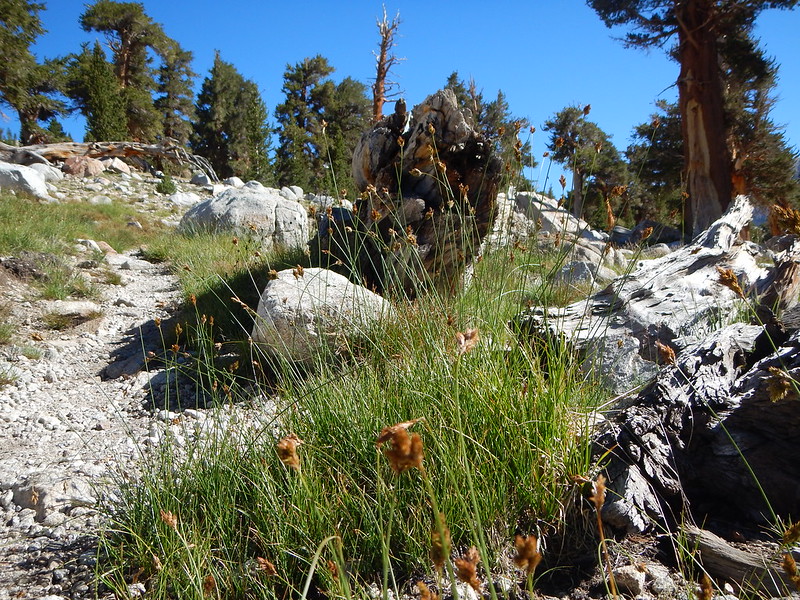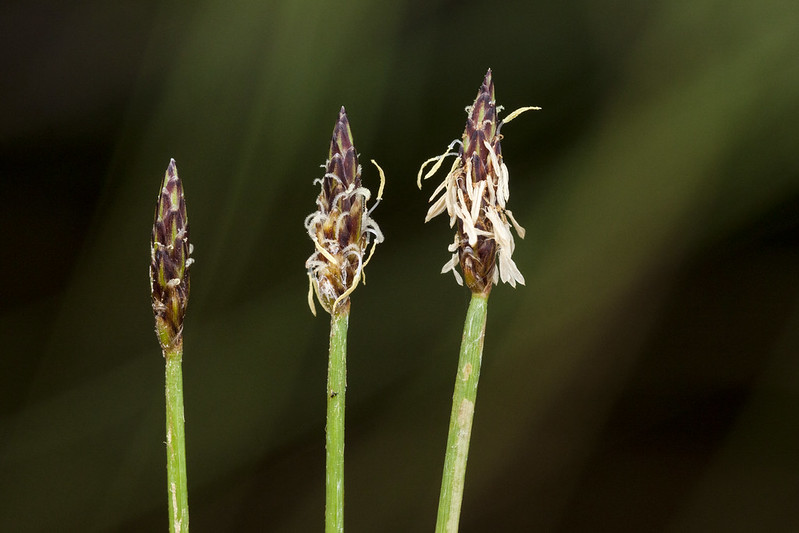Sedges are perennial grasses and grass-like monocots with 3-rows of channeled leaves that are often rough, and triangular stems (typically) that are remembered by botanists with the rhyme “sedges have edges, but grasses have knees”. Flowers are greenish-to-brownish spikelets of separate male and female flowers, and have scales or bristles instead of petals and sepals. Sedges are often found in moist habitats such as bogs, edges of freshwater marshes, and dominate in wet mountain meadows and other high-elevation habitats.
Genuses in California
In California there are plants from 19 genuses in the Cyperaceae and they are seperated into two groups:
- flowers unisexualy, fruit enclosed in sac-like bract called a perigyium:
- Carex (62 species)
- Kobresia (1 species)
- flowers bisexual or staminate, fruit not enclosed
- Amphiscirpus (1 species)
- Bolboschoenus (4 species)
- Bulbostylis (1 species)
- Cladium (1 species)
- Cyperus (18 species)
- Dulichium (1 species)
- Eleocharis (28 species)
- Eriophorum (2 species)
- Fimbristylis (3 species)
- Isolepis (4 species)
- Kyllinga (1 species)
- Lipocarpha (3 species)
- Rhynchospora (4 species)
- Schoenoplectus (9 species)
- Schoenus (1 species)
- Scirpus (5 species)
- Trichophorum (2 species)
Common & Iconic Species

_________________________________

_________________________________

_________________________________

_________________________________

_________________________________

_________________________________
Sources:
photos – header photo, B. maritiumus var. paludosus, Carex spp., C. eragrostis, E. macrostachya, E. parishii, S. americanus
The Jepson Manual, California Plant Families West of the Sierran Crest and Deserts, Botany in a Day
